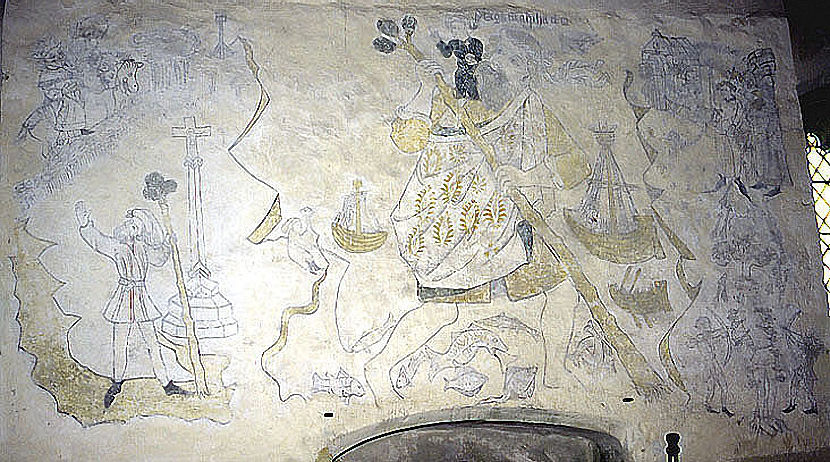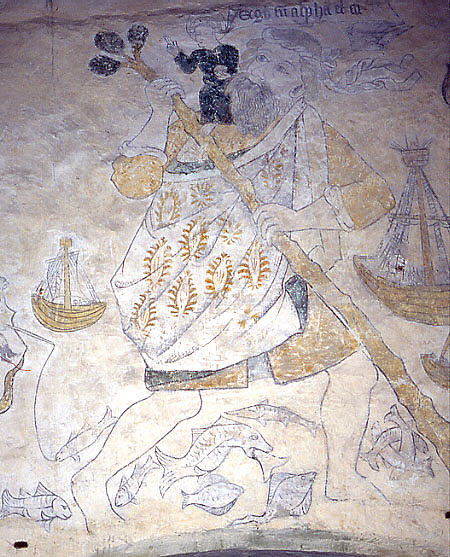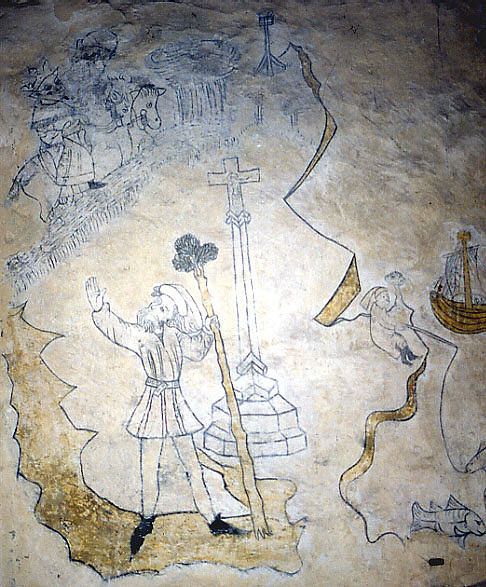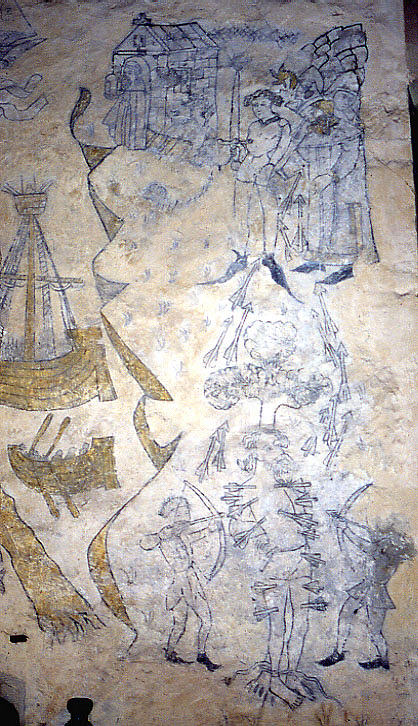Shorwell, Isle of Wight (†Portsmouth) c.1440
St Christopher


Perhaps the best English example of a St Christopher with scenes from the saint’s life – including some accurately painted 15th century ships. Unusually, the early parts of Christopher’s story are included. In the centre is Christopher, in a ‘peacock’s eye’ patterned robe and short breeches, carrying Christ on his right shoulder across the river. The inscription ‘Ego sum alpha et o[mega]’ is visible above Christopher’s head (detail, right).
Ships of various kinds surround him, as do varieties of fish. Three of these, intertwined between Christopher’s left leg and his staff, may well be symbolic of the Trinity. Similarly, between the Saint’s legs, one fish swallowing another might refer to a proverb – ‘Big fish eat little fish’ – there are examples in Netherlandish art and indeed in Shakespeare’s Pericles [Act 2, i,29].
Conversely, the fisherman on the left bank (detail below left) is a fairly common inclusion, and unlikely to symbolise ‘the Devil fishing for souls’, as is sometimes suggested. The left-hand side of the painting is devoted to Christopher’s earlier life, before his encounter with the Christ Child. At the top left (shown here in the enlarged detail at the right) are the devil and the Saint on horseback – the Devil has a crown, pointed ears and a suitably devilish-looking horse – riding towards a small grove of trees with what has now been revealed as almost certainly a gibbet beyond.

Below this is the next stage of the story, with Christopher, his staff already flowering, beside the wayside Cross bidding the Devil farewell. His short belted tunic, hose and pointed shoes are typical of the date of the painting.

On the right-hand side of the painting, and the right bank of the river, are scenes from the later part of the story, including the Hermit with his hermitage and lantern at the top (detail right). To the right of the hermitage stand an executioner with an upright sword and very long pointed shoes, and King Dagarus, an arrow sticking out of his eye as in the Golden Legend account – ‘[the arrows] retorned sodenly fro the ayer, and smote him in the eye…’. Two soldiers stand behind the King, and behind them is something probably intended as part of a castle wall.
Below is the fruitless attempt to kill Christopher by firing arrows at him, its iconography as usual recalling that of St Sebastian and, in England, St Edmund. Christopher bristles with arrows, but many others are deflected upwards, heading for King Dagarus and his attendants.
Although far from crude, the painting is a fairly unsophisticated one, but it has obviously been made with great care, and must have taken a very long time to complete. An example with comparable (but different) contextual details is at Hemblington in Norfolk.
† in page heading = Diocese